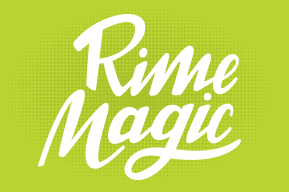I’ve been teaching reading in California for over fifty years and have seen reading trends and methodologies change over and over again. Now, once again, we have states across the country legislating and mandating intensive phonics instruction with less emphasis on what is most important – comprehension and the joy of reading.
Everyone seems to agree that we need to give our students support in reading for meaning, reading deeply, reading with comprehension. But there is a difference of opinion about WHEN to begin focusing on comprehension. And there is also a difference of opinion regarding the teaching of phonics and word recognition. We know that many students need support in understanding the structure of English words. The difference of opinion lies in two areas around the teaching of phonics: WHEN and HOW.
First, let’s define the two groups with opposing views around reading instruction. I’ll call them the “Phonics First” advocates and the “Balanced Reading” advocates. It’s quite simple, actually.
Phonics First Advocates Say:
Teach phonemic awareness (blending and segmenting, etc.) and then phonics (CVC, CVVC, etc.) explicitly first, followed by comprehension instruction later when students have broken the code. Teach phonics according to a published sequence with students mastering each phonic element that is introduced. Use “decodable books” so that students can practice decoding in context. Provide systematic, intensive phonics instruction to all students.
Balanced Literacy (or Meaning-Based) Advocates Say:
Begin with comprehension and teach phonics in the context of the whole passage. Phonemic awareness is developed through reading. Encourage students to use what they know about the language and content, contextual clues, and letter/sound correspondence to make sense of what they are reading. All at once. Use “predictable books” so that students can practice reading using all cueing systems together. Spend less time on intensive phonics instruction in isolation, and more time reading, writing, and discussing.
What DOES Work?
I have learned over the years that teaching reading is much simpler than many believe. Children need to have access to a generous supply of books and other reading material, both at home and in classroom and school libraries, and plenty of time to enjoy books that they have chosen themselves. They also need some support in becoming strategic, proficient, enthusiastic readers.
The so-called Reading Wars stem from a misunderstanding among well-meaning policy-makers around when and how phonics instruction should take place in elementary school classrooms. Phonics First advocates believe that Meaning-based teachers do not teach phonics, or teach phonics haphazardly, or not enough phonics, guessing at words rather than sounding them out. This is a misconception. Skilled Meaning-based teachers teach lots of phonics, but they teach it in the context of text that is meaningful to students: a poem or story rather than a worksheet. They do ask students to make informed predictions as they read (based on the entire linguistic system—grapho-phonics, syntax, semantics, and pragmatics) about what might make sense so that comprehension is always intact.
Many students will learn to read easily when they are read to by family and teachers and given access to lots of books at home and school, and time to read independently their self-chosen books every day. There are some students who do need some extra focus on how words work. Most phonics programs require students to master a sequence of skills and memorize letters and sounds in a sequence designed by a publisher. However, as we know from decades of reports of low reading scores1, this has not worked for a percentage of our students, who continue to struggle with word recognition even as they enter middle and high school.
After decades of working with struggling readers, I began to see several critical elements that really produce results, a formula that works and will bring a welcome change to literacy levels in this country when it reaches enough school districts: Surround our children with plenty of books, give them the choice and independence as to what they will read, focus reading support on comprehension and vocabulary development, and focus daily phonics instruction on very short, immersive, engaging lessons based on onset and rime. Focus on Love of Reading and building lifelong readers!
We now know from research that focusing on breaking words up into separate phonemes (s/t/a/m/p) is not as easy for our students as breaking words up according to the natural patterns of written language: the onset and the rime (st amp). The Rime Magic system (Scholastic, Inc.) is a completely different approach to phonics and word recognition. Teachers engage with students in a Rime Magic lesson for just five minutes each morning, allowing plenty of time for reading and writing during the rest of the language arts period. Instead of presenting students with a sequential array of phonics elements to master, we immerse them in the key parts of words in the context of the whole word. Students are swept up in the rhythm and chanting of the rimes and begin to see the patterns, making sense of English word structure at their own pace. This builds joyful confidence and gives the children power over their own learning. Rime Magic is spreading across the states [LB3] by word of mouth, teachers are excited, and students who have been reluctant to participate are highly engaged. District leaders are thrilled to discover a system that is cost-effective and gets results.
Instead of fighting over how to teach reading, let’s look at what is working. Let’s spend our money on school and classroom libraries rather than expensive reading programs, worksheets, and workbooks. Let’s listen to the teachers who are on the frontlines; let’s offer choices[LB4] based on what we understand about reading as a meaning-making process, rather than relying on inflexible mandates and legislation.
1 National reading test scores have not budged in 40 years despite endless reform efforts and back-and-forth changes in teaching literacy. (SF Chronicle, June 23)
